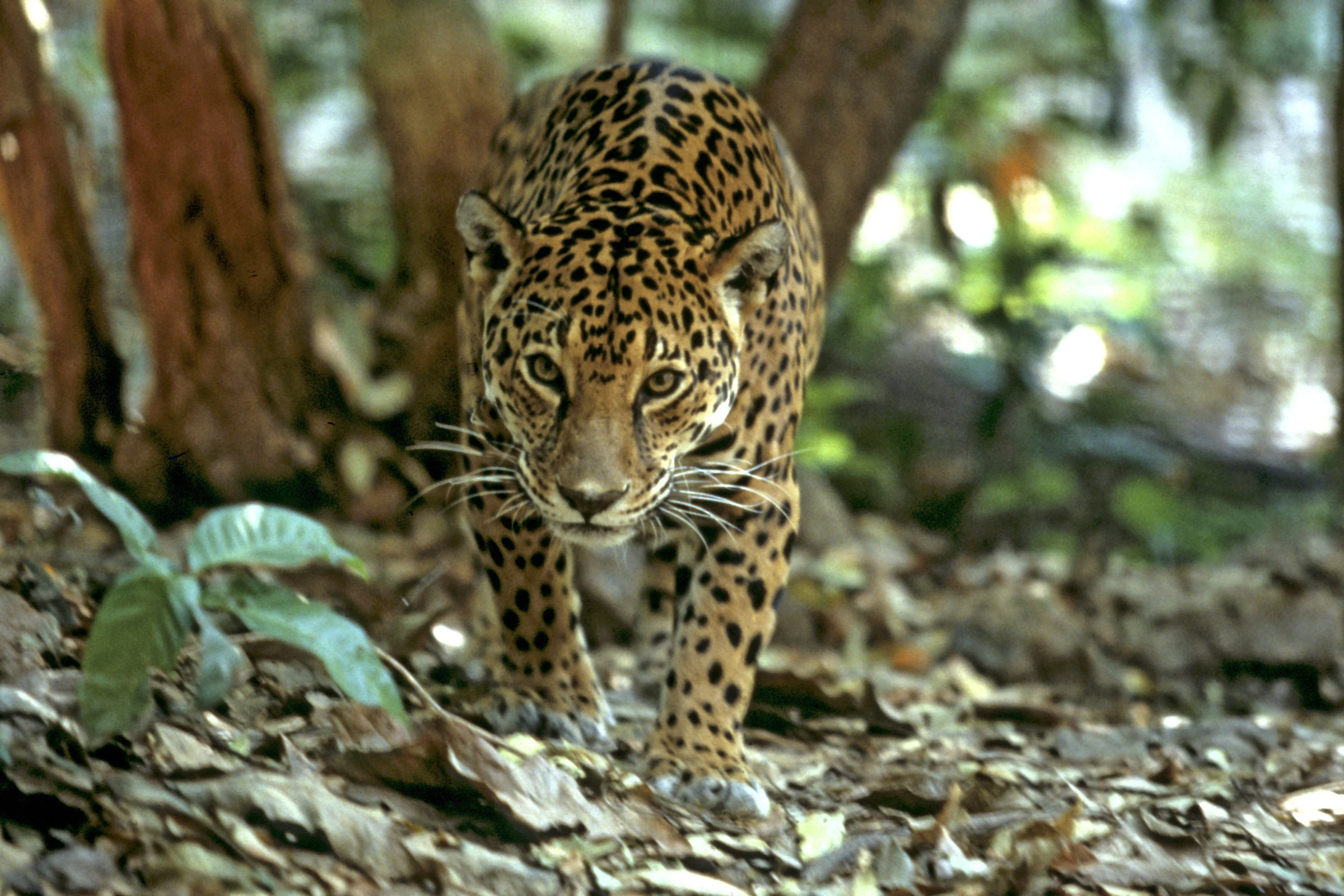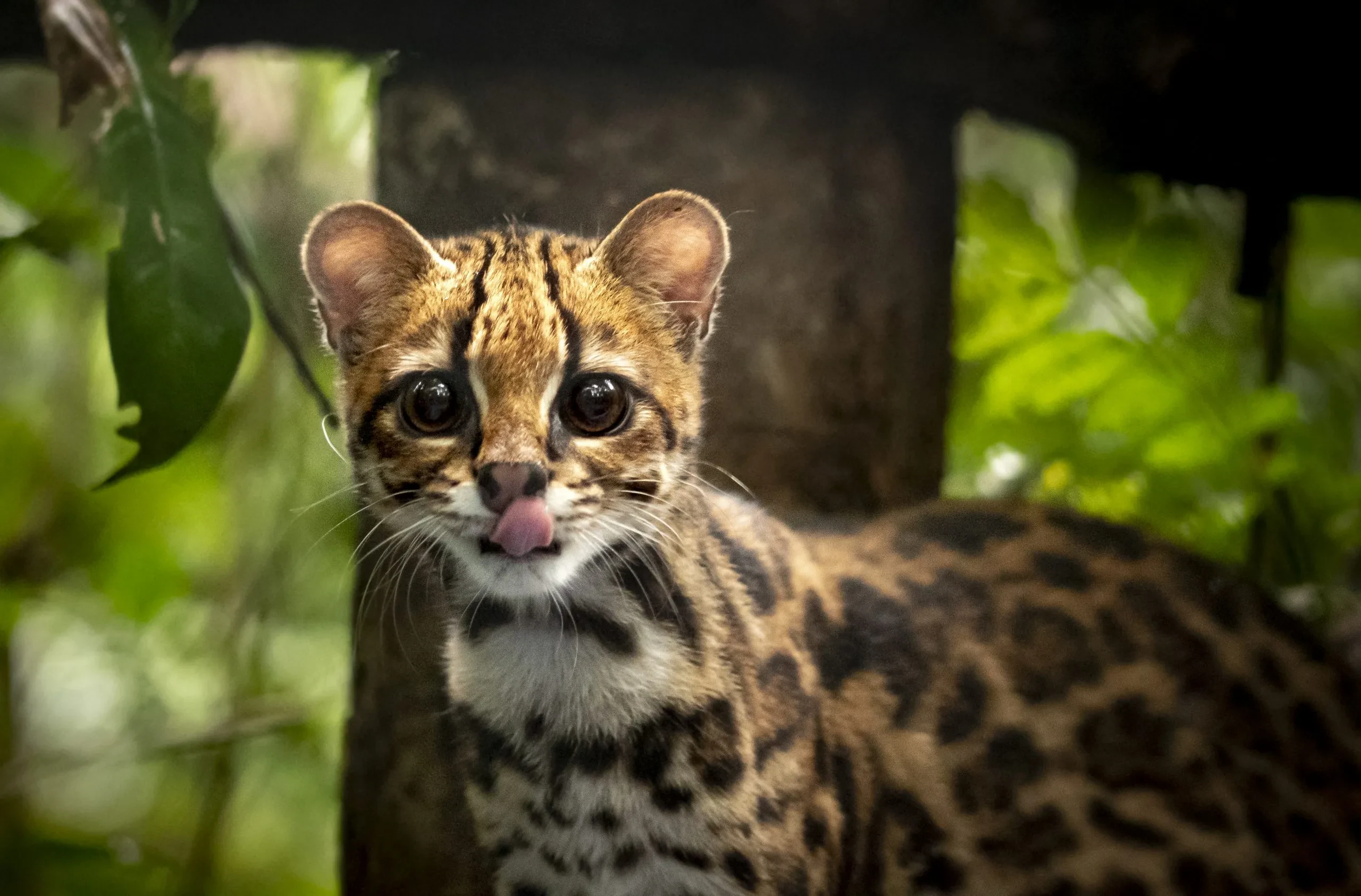Embarking on a journey through the Amazon rainforest is like stepping into a world brimming with extraordinary wildlife encounters and breathtaking natural beauty. Among the myriad of species that call this lush environment home, the cats of the Amazon rainforest, such as jaguars, are some of the most elusive and fascinating creatures you might encounter. In this article, we’ll dive into the world of these majestic felines, explore their habitats, and share some tips on where and how you might catch a glimpse of them in the wild.
Importance of Rainforest Wildlife in Ecosystems
The Amazon rainforest, often referred to as the “lungs of the Earth,” is a vast and vibrant ecosystem teeming with life. Among its diverse inhabitants, the cat species stand out as particularly intriguing due to their elusive nature and captivating presence. The Amazon is home to several cat species, including the iconic jaguar, the secretive ocelot, the agile margay, and the petite oncilla, each with its own unique traits and behaviors.
Amazon cats are not just fascinating creatures to observe; they play a crucial role in maintaining the ecological balance of the rainforest. As apex predators, these cats help control the populations of other species, preventing overgrazing and maintaining the health of the ecosystem. Their presence is an indicator of a healthy environment, as they require vast territories and diverse prey to thrive.
Jaguars: The Apex Predators

Throughout history, the indigenous cultures of the Amazon have revered these majestic felines. Jaguars, in particular, are often seen as symbols of strength and power, featuring prominently in local folklore and mythology. Understanding the cultural connections between humans and these cats provides deeper insight into the importance of conserving their habitats.
Despite their significance, Amazon cats face numerous threats, primarily due to habitat destruction and human encroachment. Deforestation for agriculture and illegal poaching for their beautiful pelts have severely impacted their populations. Conservation efforts are critical to ensuring these species do not face extinction, highlighting the need for sustainable practices in the region.
Jaguars in the wild are the largest cats in the Americas and are known for their powerful build and stunning spotted coats. These magnificent predators are skilled swimmers and often hunt along riverbanks, making the Amazon a prime habitat for them. Jaguars play a crucial role in maintaining the balance of the ecosystem by controlling prey populations and facilitating the dispersal of certain plant species.
Evolved Adaptations
Jaguars have evolved unique adaptations that make them formidable hunters in the dense Amazon rainforest. Their powerful jaws and sharp teeth allow them to pierce the skulls of their prey, a hunting technique distinct from other big cats. Their ability to swim across rivers and lakes also sets them apart, as they are known to pursue aquatic prey such as caimans and fish.
In the rich tapestry of Amazonian folklore, the jaguar often represents a mystical figure with supernatural abilities. Many indigenous tribes believe that jaguars possess the power to travel between the spiritual and physical worlds. This deep cultural reverence underscores the importance of preserving both the species and the rich traditions they inspire.
Several organizations are actively working to protect jaguar populations through various conservation initiatives. These include habitat protection, anti-poaching efforts, and community education programs that emphasize the importance of jaguars to the ecosystem. Collaborative efforts with local communities are essential in creating sustainable solutions that benefit both humans and wildlife.
Ocelots: Masters of Camouflage

While jaguars are the most well-known, the Amazon is also home to other fascinating cat species. Ocelots are medium-sized cats with striking patterns that help them blend into the dense foliage. Margays, smaller than ocelots, are known for their incredible agility, often leaping from tree to tree in pursuit of prey. The elusive oncilla, the smallest of the Amazon cats, is rarely seen and is adept at navigating the forest canopy.
Ocelots possess a distinct elegance with their beautifully patterned coats, which serve as perfect camouflage in the dappled light of the rainforest. These nocturnal hunters are solitary creatures, relying on their keen senses to stalk and ambush prey. Their adaptability to various environments within the Amazon makes them a resilient species, but they are still vulnerable to habitat loss.
Margays: The Agile Climbers
Margays are true acrobats of the rainforest, with an extraordinary ability to rotate their ankles, allowing them to climb down trees headfirst. This unique adaptation enables them to hunt and evade predators in the forest canopy. Despite their agility, margays face threats from deforestation and the illegal pet trade, making conservation efforts crucial for their survival.
Oncillas: The Elusive Ghost Cats
Oncillas, the smallest of the Amazon cats, are elusive and rarely seen, often referred to as the “ghost cats” of the forest. These petite predators are perfectly adapted to life in the trees, where they hunt small mammals and birds. Their secretive nature and low population density make them particularly challenging to study, highlighting the need for continued research and conservation efforts.
For those yearning to witness these captivating creatures in their natural habitat, several key locations in the Amazon offer the best chances for sightings. Two of the most renowned areas for wildlife enthusiasts are Manu National Park and the Tambopata region in Peru.
Role of Cats in the Amazon Ecosystem
Manu National Park is a UNESCO World Heritage centre that boasts an unparalleled diversity of wildlife. The park’s vast expanse of protected rainforest provides an ideal environment for jaguars and other Amazon cats to thrive. Visitors can explore the park’s numerous trails and waterways, guided by experienced naturalists who offer insights into the behavior and ecology of these elusive felines.
The Tambopata region is another prime destination for those seeking to encounter Amazon cats. Known for its rich biodiversity, Tambopata offers a variety of ecotourism opportunities, including guided jungle tours and river excursions. The region’s lodges and eco-resorts provide comfortable accommodations while allowing travelers to immerse themselves in the heart of the rainforest.
Beyond the well-trodden paths of Manu and Tambopata, the Amazon is dotted with lesser-known locations that offer unique wildlife experiences. Areas like the Pacaya-Samiria National Reserve and the Yasuni National Park provide opportunities to explore untouched landscapes and potentially spot elusive cats. Local guides in these regions are invaluable for navigating the dense terrain and increasing the chances of sightings.
Wildlife Encounters: Tips for Spotting Cats

Spotting a jaguar or any of the Amazon’s cat species requires patience, preparation, and a bit of luck. Here are some tips to enhance your chances of a successful wildlife encounter:
The best time to visit the Amazon for wildlife encounters is during the dry season, from May to October, when animals are more likely to be active and visible. Hiring a knowledgeable local guide can significantly increase your chances of spotting these elusive cats, as they are familiar with the animals’ habits and the best locations for sightings.
Best Locations for Sightings
Wildlife encounters in the Amazon often require patience. Spend time quietly observing the surroundings, listening for any sounds or movements that might indicate the presence of a cat. Keep your camera ready, as these moments can be fleeting but unforgettable.
When venturing into the Amazon, it’s crucial to respect the natural environment and its inhabitants. Follow the guidance of your tour guides and adhere to established trails to minimize your impact on the ecosystem. Remember that preserving the rainforest is essential for the continued survival of these magnificent creatures.
A deeper understanding of animal behavior can greatly enhance your wildlife viewing experience. Learn about the feeding patterns, territorial habits, and communication signals of Amazon cats. This knowledge not only increases your chances of sightings but also enriches your appreciation of the complex lives these animals lead.
The Impact of Ecotourism on Conservation
Ecotourism plays a vital role in the conservation of the Amazon rainforest and its wildlife adventures. By choosing eco-friendly tours and accommodations, travelers can contribute to the preservation of this unique ecosystem. Many lodges and tour operators work in collaboration with local communities to promote sustainable practices and support conservation efforts.
Ecotourism not only benefits wildlife but also supports local communities by providing economic opportunities and fostering a sense of stewardship for the environment. When planning your visit, consider engaging with community-based tourism initiatives that prioritize sustainable development and cultural exchange.
Supporting Conservation Initiatives

A significant aspect of ecotourism is educating visitors about the importance of conservation. Eco-tours often include educational components that inform travelers about the challenges facing the rainforest and its inhabitants. This awareness can inspire more responsible travel choices and a deeper commitment to protecting these vital wildlife ecosystems.
As the demand for sustainable travel grows, ecotourism in the Amazon is evolving to meet new challenges and opportunities. Innovations in eco-friendly accommodations, renewable energy use, and community-led conservation projects are paving the way for a more sustainable future. These efforts not only protect the environment but also enhance the overall travel experience.
Capturing the Beauty of Amazon Cats Through Photography
For photographers, the Amazon offers a wealth of opportunities to capture stunning images of its diverse wildlife and landscapes. Here are a few tips for capturing the essence of the rainforest:
The dappled light filtering through the dense canopy creates dramatic contrasts and highlights in the forest. Use this natural light to your advantage when photographing the cats and other wildlife. Be patient and wait for the perfect lighting conditions to showcase the beauty of the Amazon.
Photography is a powerful tool for storytelling. Aim to capture images that convey the unique characteristics and behaviors of the Amazon’s cats. Consider the context of your photos and how they contribute to the broader narrative of the rainforest’s incredible biodiversity.
Respectful Distance and Ethical Practices
Understanding the technical aspects of wildlife photography can enhance your ability to capture stunning images. Experiment with different camera settings, such as shutter speed and aperture, to adapt to the changing light conditions of the rainforest. Practice using a telephoto lens to photograph animals from a respectful distance without disturbing their natural behavior.
While capturing the beauty of the Amazon, it’s essential to practice ethical wildlife photography. Avoid disrupting the animals’ natural behavior for the sake of a photo. Respect their space and prioritize their well-being over getting the perfect shot. This approach not only ensures the safety of the wildlife but also aligns with the principles of responsible tourism.
Exploring the Amazon rainforest and discovering its fascinating cats is an experience like no other. From the powerful presence of jaguars to the agile grace of margays, these felines are emblematic of the rainforest’s untamed beauty. By embarking on an ecotourism adventure and supporting conservation efforts, you can play a part in preserving this vital ecosystem for generations to come. So pack your bags, grab your camera, and get ready for an unforgettable journey into the heart of the Amazon.
Call to Action: Share Your Amazon Experience
Your journey to the Amazon can have a lasting impact beyond personal experience. By sharing your stories and photos, you raise awareness about the importance of conserving this unique ecosystem. Encourage others to embark on similar sustainable adventures, spreading the message of conservation far and wide.
As you reflect on your Amazon adventure, consider the profound connection between humans and nature. This journey offers a chance to appreciate the wonders of the natural world and our responsibility to protect it. Let this experience inspire you to continue supporting conservation efforts and advocating for the preservation of the planet’s most precious habitats.
The future of the Amazon depends on collective efforts to address the challenges it faces. Continued support for conservation initiatives, sustainable tourism, and environmental education will ensure that this remarkable ecosystem and its inhabitants thrive for generations to come. Your journey is just the beginning of a lifelong commitment to preserving the beauty and biodiversity of the Amazon rainforest.




